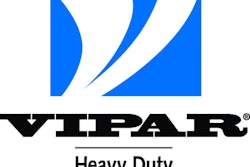One industry analyst is predicting bleak news for the truck dealer industry.
IBISWorld industry analyst Antonio Danova said he expects, over the five years leading to to 2012, revenue for dealers will fall at an annualized rate of 1.1 percent to roughly $93.5 billion.
“A majority of the industry’s losses came before the past five years, however, because the Environmental Protection Agency (EPA) proposed new emissions legislative standards for all 2007 model year trucks,” Danova said.
These regulations put pressure on truck manufacturers, increasing the cost of production on new vehicles, a cost that would ultimately flow through to retail shops and downstream consumers, Danova claims. To evade price hikes on new trucks, many freight companies engaged in heavy pre-buy activity prior to 2007, causing the market to become saturated. With little demand for new trucks after this trend, the industry endured a revenue loss of 25.9 percent during 2007 alone.
To compound the effects of pre-buy activity on the industry, demand for new trucks dropped further through 2008 and 2009 as the recession took its toll on the entire US economy.
“Downstream customers, particularly freight trucking companies, chose to exhaust the useful life on their existing vehicle fleet rather than incurring the costs of upgrading to or adding new trucks.” Danova said, adding that the end result was new truck sales – which account for 60 percent of revenue for the average truck dealer – continued to fall sharply.
This trend, along with the higher vehicle cost as a result of EPA-mandated regulations, eroded profitability throughout the industry as the average industry profit margin fell from about 6.2 percent of revenue in 2007 to roughly 5 percent in 2012. As the economy gained steam in 2010 and 2011, Danova said, truck dealers benefited from trucking companies unleashing pent-up demand for new truck purchases they delayed during the downturn.
Danova claims the truck dealer industry is highly fragmented and has a low level of market share concentration and says in 2012, no industry players will generate more than 5 percent of industry revenue. The low concentration level reflects the larger number of nonemployers operating within the industry and the industry’s high level of competition, Danova said. Over the five years to 2012, the number of industry firms is expected to remain flat, decreasing at an annualized rate of 0.2 percent to an estimated 2,361.
On the bright side, truck dealers are continuing to gain from pent-up demand as more trucking companies upgrade or replace their aging vehicles. In addition to this demand, though, truck dealers will also soon benefit from further pre-buy activity as the EPA implements greenhouse gas emissions and fuel economy standards for the 2014 model year.
According to Danova, growth will be swift and immediate for the industry, as revenue is expected to grow 5.5 percent during 2012 alone. In the long run, however, vehicle sales may taper off as the market again reaches saturation and demand tempers. Nonetheless, IBISWorld still expects the industry to return on a path toward growth, as revenue is expected to climb over the five years to 2017.











